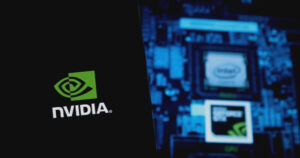Revolutionizing Protein Design: NVIDIA and MMseqs2 Join Forces
By Jessie A. Ellis
Published on June 12, 2025
In a remarkable confluence of technology and biology, NVIDIA has partnered with MMseqs2 to harness GPU acceleration for protein sequence alignment. This innovation is set to catalyze AI-driven drug discovery and transform the landscape of protein design. Here at Extreme Investor Network, we delve deeper into how this collaboration may redefine efficiency and effectiveness in biomedicine.

The Critical Role of Protein Sequence Alignment
Understanding protein sequences is vital for elucidating gene functions and tracing evolutionary lineages—all of which are integral to modern drug development. By aligning new protein sequences with known counterparts, researchers can predict structure and function, effectively pinpointing potential drug targets and identifying disease-linked mutations. However, traditional alignment tools face limitations as genomic data volumes surge.
Technological Advancements in Protein Alignment
The early 90s saw tools like BLAST revolutionize data search speeds, but the exponential growth of genomic information called for more sophisticated methods. Enter MMseqs2. Developed in the 2010s, it boasts speeds over 400 times faster than earlier tools, making it essential for genome annotation and drug discovery amidst exploding data sets. The shift towards GPU acceleration in this context is not just beneficial; it’s imperative.
The Cutting-Edge MMseqs2-GPU
MMseqs2-GPU employs GPU-specific accelerations, enabling it to execute multiple sequence alignments through CUDA. This leap in technology significantly outstrips previous methodologies, utilizing a parallel algorithm that directly scores alignments without gaps, enhancing both speed and accuracy. Remarkably, MMseqs2-GPU can achieve up to 100 trillion computations per second (TCUPS) on just eight GPUs, drastically reducing costs associated with protein sequence searches.
Enhancing AI-Driven Research
The speed at which MSAs are conducted has profound implications for AI-driven workflows. Notably, models like AlphaFold2 benefit greatly from these advancements, with MMseqs2-GPU accelerating structure predictions by up to 23 times compared to earlier methods. This efficiency not only reduces research costs but also expedites the drug discovery process, allowing for quicker transitions from lab to market.
Looking Ahead: The Future of Bioinformatics
The alliance between NVIDIA and MMseqs2 marks a significant turning point in protein science. With the continual integration of alignment technologies into AI predictive models, GPU acceleration is poised to reshape molecular research, unlocking unprecedented breakthroughs in both medicine and biotechnology.
At Extreme Investor Network, we foresee this collaboration as a potential game-changer in the biotech sector, fostering innovations that can lead to more effective treatments and a deeper understanding of biological processes.
For those eager to stay ahead in the fast-evolving world of biotech investments, this partnership offers a noteworthy focal point. As we keep an eye on these advancements, our commitment is to provide you with the insights needed to navigate the future of investment in this promising field.
For more detailed insights, be sure to check out the original article on NVIDIA’s website. Stay tuned to Extreme Investor Network for ongoing coverage of the latest developments in cryptocurrency and blockchain technology as they intersect with groundbreaking scientific innovations.
Image source: Shutterstock

